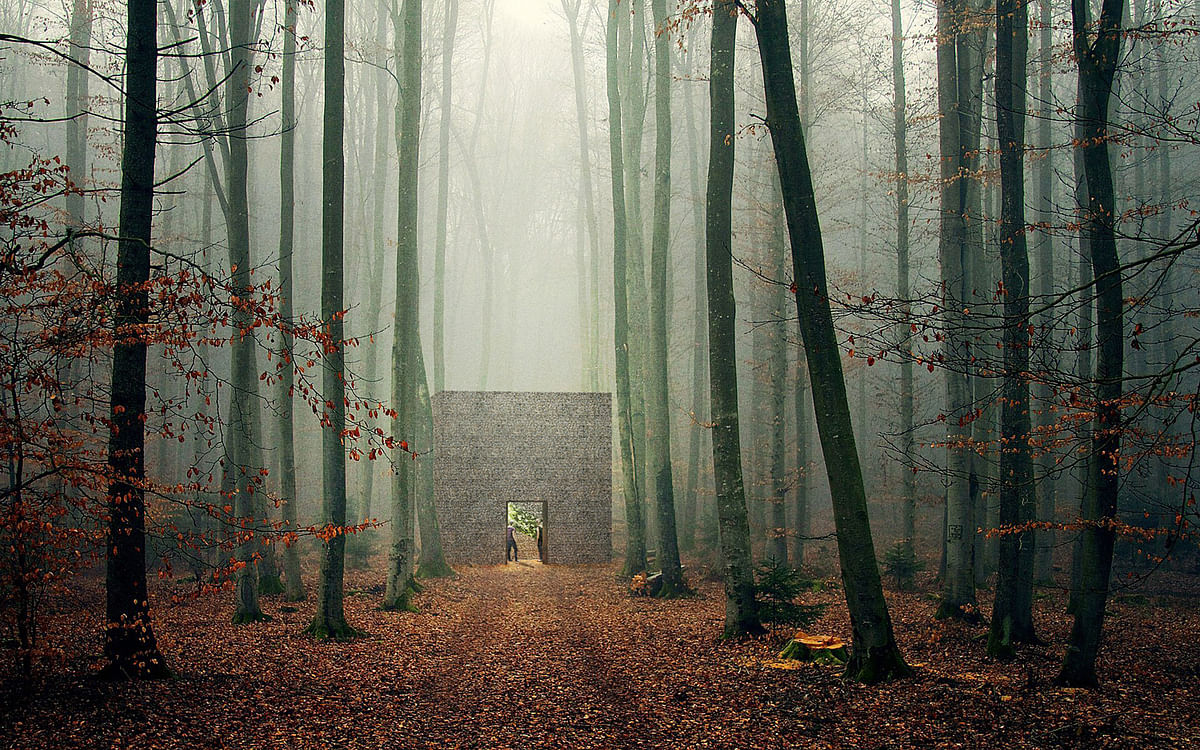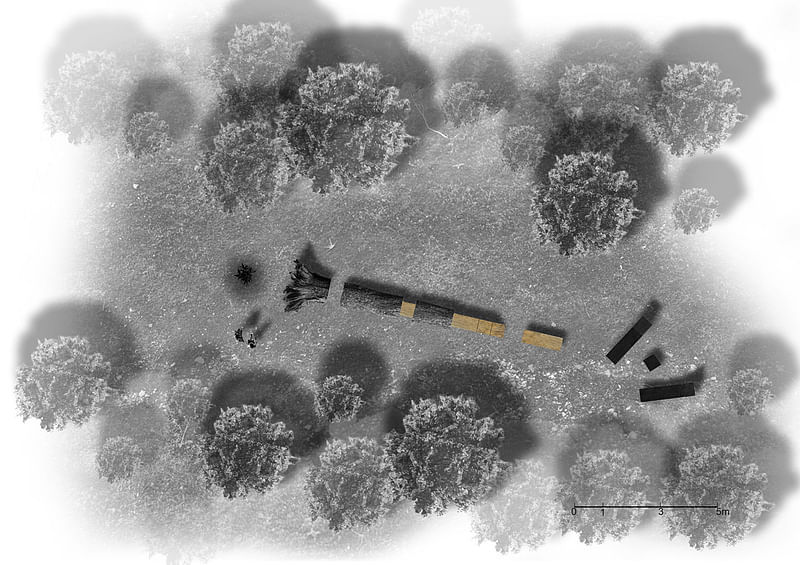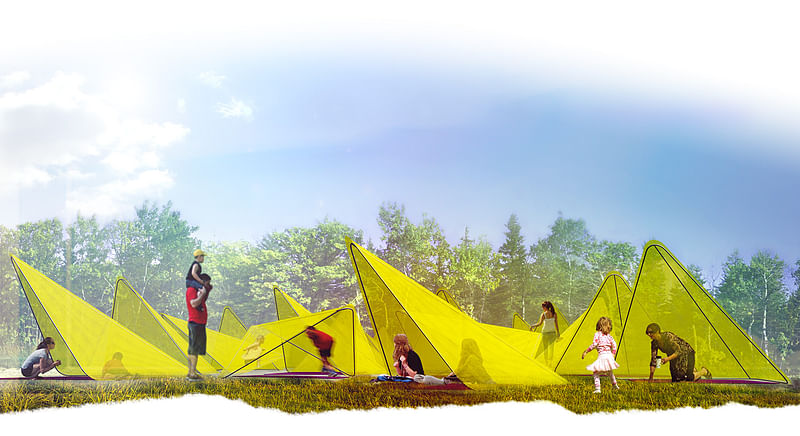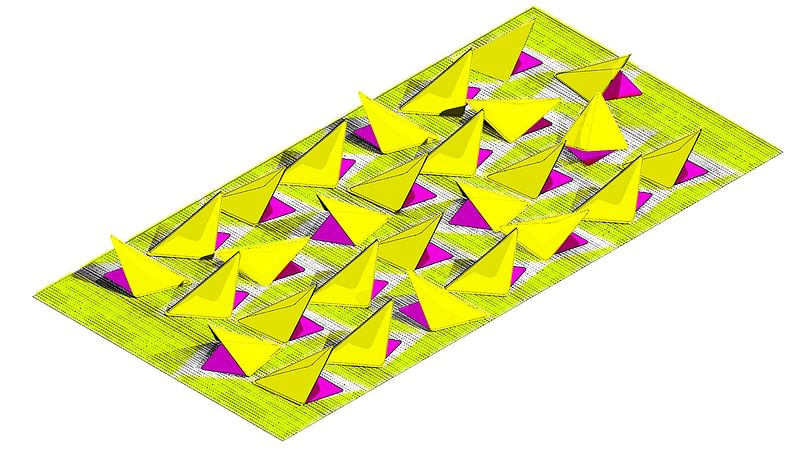
Sneak peek of the winners for the 17th International Garden Festival in Quebec
By Justine Testado|
Wednesday, Feb 17, 2016
Related
Although Quebec is still going through gripping winter temperatures, the iconic Reford Gardens in Grand-Métis is already preparing for the 2016 International Garden Festival this summer. Thousands of visitors will get to explore 27 contemporary gardens and the interactive landscape spaces created by more than 85 landscape architects, architects, and designers. Most recently, the winners of the Festival's competition were revealed.
As one of the most anticipated garden festivals in the world, designers face stiff competition for a chance to have their landscape installations realized for the event. Five teams — all with very distinct approaches in their proposals — were selected out of 203 submissions from 31 countries.
The 2016 festival will open on June 23 until October 2, 2016.
Get a glimpse of the winning designs below.

"Le caveau" by Christian Poules, architect and landscape architect | Basel, Switzerland
Project summary: "The growing plane is shrouded in the intimacy of Le caveau (the cave) - a four-sided room of stacked gabions full of stones. Stone that allows light to filter through its gaps and washes the room with its shadows. It is a room of reflection. It is a room for dreamers. Just as the plane levitates before us, we are held in the balance of the stone and life itself. The personification of our own imaginations suspended in time. The primitive plane symbolizes a beginning - the seed and the soil, the tilted horizon between earth and sky. The beauty of the garden is found in the simplicity and contradiction of material, light, time and space. It is a shelter for meditation and a canvas for nature. In Le caveau, vastness is held behind its ramparts."
"Cyclops" by Craig Chapple, architect | Phoenix, Arizona, United States


Project summary: "Cyclops is a singular object on the landscape as well as a singular frame of the landscape. Made up of 258 8-meter long timber and 1 x 6 boards, they are held in a concentric ring by 2 steel rings suspended from the surrounding trees by stainless steel cables. Cyclops is held in a tenuous balance with the environment that provides for it. The central 1.5 m opening at the bottom of the cone is a highly-charged occupiable space for the viewer to both view the canopy in a new way but also truly feel the focus of the suspended weight as the physical latent force in the trees themselves. The viewer finds himself playing the central role of the work in rediscovering their relationship to the energy in their environment."
"Carbone" by Coache Lacaille Paysagistes [Maxime Coache, landscape architect; Victor Lacaille, landscape designer; Luc Dallanora, landscape architect] | Nantes, France


Project summary: "The garden is an artifice and leaves many traces. The Earth is a garden. Farming, industry, the internet all leave their mark. Since the dawn of time, nature is altered. The gardener is the one with the restorative power. A gesture of kindness. This installation evokes the cycle of production as a parallel to the carbon cycle. The garden landscaped or the landscape gardened. Regenerating the forest and sowing where we have harvested brings nature back to life. Transmit the love of landscape to those who will outlive us. A noble and familiar material, wood is our crib, our bed, our coffin. Cut a tree, remove it from the forest, in itself a vast garden, is the fruit of our labour. It is the result of the work of those who came before us, who planted a seed and provide us today with the wood that gives us rest. A sculpted tree trunk, partially cut into pieces helps to illustrate the primary material used to build furniture. A stump and its roots, a tree trunk cut into parts and five modules made of timber, some lightly burned on the surface. A young tree grows where the tree might have grown tall had the tree not fallen."
"TiiLT" by SRCW [Sean Radford, architect, Chris Wiebe, designer] | Winnipeg (Manitoba) Canada


Project summary: "Finding roots in the formal geometries of the labyrinth and the many informal camping traditions in the Canadian landscape, TiiLT is a transformable and inhabitable place for visitors to act, or to idle, however they may be inclined. Each structure may be flipped between two orientations, responding to the position of the sun, offering alternating views and shifting pathways through the site. The toggling movement conjures a school of fish, or a flock of birds, flitting in opposite directions yet connected as a whole. The straw-like lightness of the structures and brilliant yellow skin recall a field of floral blooms, contrasting the surrounding green landscape and blue sky. TiiLT challenges the notion of the garden in creating an interactive environment that is part sculpture and part landscape - to evoke a sense of place and beauty from modest elements. TiiLT provides simple, intimate, shaded spaces in congregation, retrieving memories of long days in short seasons, time spent alone and among neighbours, embracing the feeling of shared disconnection, together."
"La maison de Jacques" by Romy Brosseau, Rosemarie Faille-Faubert, Émilie Gagné-Loranger, intern architects | Quebec City (Québec) Canada


RELATED NEWS Winning 2015 Garden Festival installations intrigue visitors at Reford Gardens

Project summary: "La maison de Jacques (or Jack’s House from the children’s fable Jack and the Beanstalk) is different from the one we know. You might think you have just stepped out of a children’s story. The house is a green grove that is enveloped in bloom. You enter by walking on stepping stones that traverse a ground-cover made of small. Once inside, you wander between the rows of beans of tightly winding their way up a light wooden structure. The walls divide the space into a series of small hidden gardens, singular in their proportions. These cocoons are ideal hiding places for a game of hide-and-seek. One remains a secret, inaccessible... La maison de Jacques is magical. It will be built over several weeks, starting with the seedlings in May that will grow to be more than 3 metres in height in a short time. Their clumps of red flowers will be in bloom by the end of July and then the beans will form to bring a taste of goodness to everyone."
In addition to the five installations above, the jury awarded a special mention to "Dress Up!" by Ran Hwang (artist), Sangmok Kim (architect), Sungwoo Kim (architect), and Shin Hee Park (fashion artist) from Seoul, Beijing, and New York. Their project will also be part of the Festival.
Take a gander at previous Garden Festival designs here, here, and here.

Share
0 Comments
Comment as :